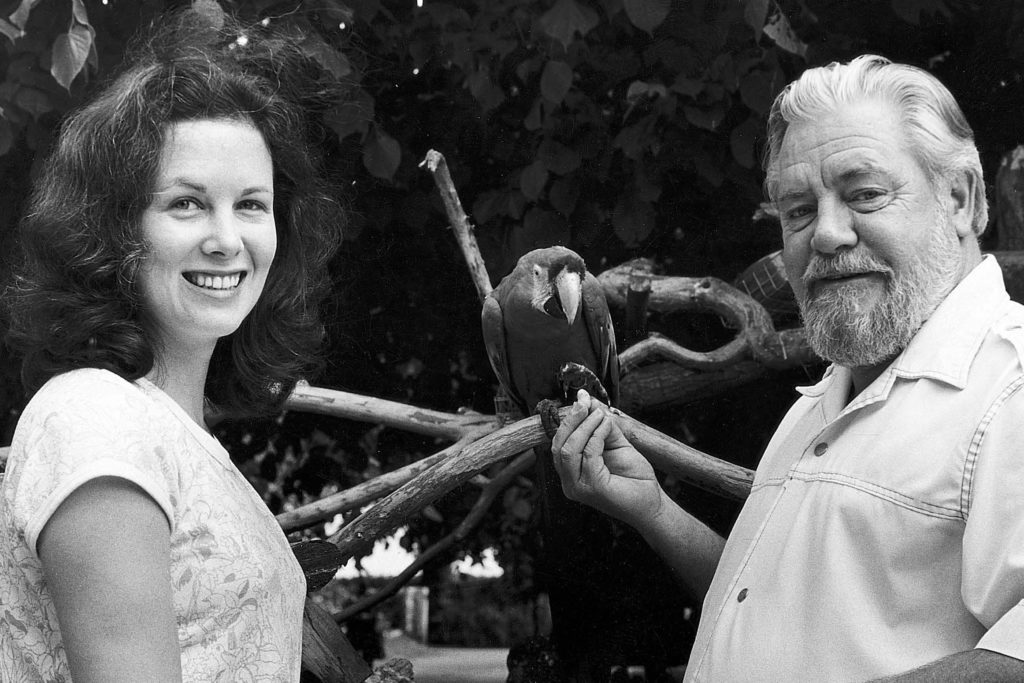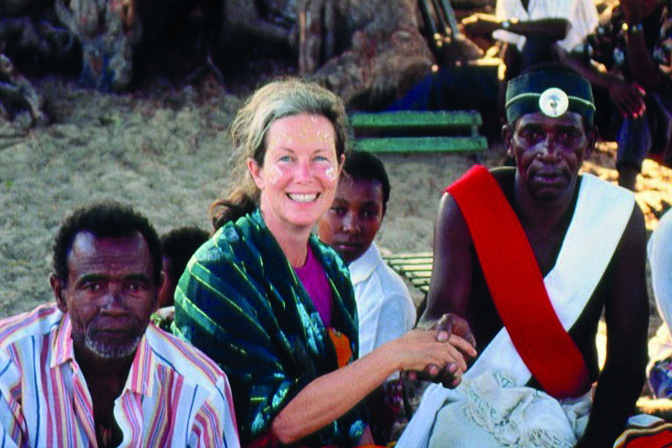The best way to keep in touch with Hand Picked Hotels is to sign up to our news, offers and events below. Please do read our Privacy Policy for more information on how we use your data and you can of course opt out at any time.
Grandmother of the Tortoise
A frog in a box and an Easter chick incident sparked an early love of all creatures for Lee Durrell that led her to play a pivotal role in safeguarding the future of some of the world’s most critically endangered animals.
In our interview from her home in Corfu, Lee Durrell radiates a warmth and positive energy entirely befitting of someone who has dedicated her entire life to conservation. As we chat, our conversation is punctuated with the sounds of her beloved dogs, Bonnie and Leon, checking in while her three cats, we are reliably informed, roam freely around outside and inside. Her late husband, Gerald, may have gained global recognition as a conservationist and novel writer, but it is evident that Lee’s passion for the natural world is an equal match. Together, they made many significant strides to shape the conservation landscape globally, most notably through their work with Jersey Zoo, a lifetime’s dedication that Lee is determined to continue.
Growing up in America, Lee developed a love of animals from an early age, albeit in a slightly less conventional way, as she explains. “One of my first pets was a frog when I was two or three years old. My grandfather was a carpenter, and I was delighted when he made a frog box for me to keep it in”, she enthuses. “We always had lots of animals at home – tortoises, lizards, cats, dogs, you name it!” It was an unfortunate accident involving an Easter chick that was to prove monumental to an impressionable young Lee. “I was playing with my little chick on Easter morning when I accidentally stepped on it; I was utterly devastated. I went to Sunday School in tears and everyone prayed for my chick. It was a vital moment for me.” She continues, “A couple of years later, when I was in primary school, a teacher boldly proclaimed that animals don’t go to heaven. I was furious, and, from that point, I was determined to make it my mission to save animals.”
This mission led Lee to Madagascar, a country she clearly adores, where she spent two years studying the calls of mammals and birds as part of her PhD at Duke University.
Upon her return to America a certain Gerald Durrell was visiting the university. “Gerry was already a hero of mine, I’d read many of his books and loved his work, so when I was asked to drive him to a dinner with my professors, I leapt at the chance,” Lee recalls. “We hopped in my car, full of leaves and dog hairs, and spent the next two hours animatedly discussing wildlife – we were so distracted that we were two hours late for that dinner!” Less than a year later, Gerald invited Lee to Jersey to help him set up a sound recording laboratory at the Zoo. It may have been a tactic to entice her to join him, but it worked, and, together, they became a conservation powerhouse.

Lee affectionately recalls how Gerry revelled in telling people that he was “the only man in the world who’d been married for his zoo,” but, in truth, they shared a valuable belief that empowering people in conservation can spark positive change. As Lee explains, “It’s about taking a collegiate approach, based on mutual respect – that’s the right way to get things done.” This powerful ideology has led to some incredible achievements.
The invaluable work of the Durrell Wildlife Conservation Trust spans six decades and multiple countries, from India and Brazil to the Caribbean and Mauritius. While saving endangered species is the Trust’s heartbeat, empowering local communities to help rehabilitate these fragile territories and protect biodiversity is a key mission. Through rewilding projects across multiple global sites, the Trust has helped rebuild damaged ecosystems through reforestation, restoring key species and creating more diverse and resilient landscapes for wildlife and people. “Gerry used to say that conservation plods along at the pace of a donkey while its challenges go at the rate of an Exocet missile,” Lee says. “It’s a constant battle, emotionally and practically, but give up and you’ve lost the fight. We can be successful, and that’s a cause for hope.”
It becomes apparent during our conversation that conservation successes are hard won and can come at a considerable cost. From 1985 to 2001, Lee was pivotal in the first conservation efforts to save the ploughshare tortoise of Madagascar, working with local communities to safeguard its future. Historically the tortoises were heavily prized for their meat, with their numbers dwindling at one stage to just a few hundred. In recent times they have been sought for their beauty and uniqueness, sadly now making them a target for global wildlife traffickers, leaving just a handful in the wild. While working on the ploughshare project, Lee and her team in Madagascar had to contend with constant hurdles. “We’ve had everything thrown at us, from thefts, fires and fatal shootings to bureaucracy and corruption at the highest level,” Lee explains. “It was extremely stressful, especially as I had been running the project and supporting the team from far away Jersey. A particularly low point was when around a hundred tortoises were stolen from our breeding centre, destined for the black market”, she continues. “We managed to trace some of them to the Netherlands, which shows the scale of the problem but, unfortunately, due to importation laws, we couldn’t bring them back to Madagascar.”

“To my surprise, I was led from my hut by the villagers, dressed in local finery, and presented to a gathering of local dignitaries where I was feted as the Grandmother of the Tortoise”
Despite these crushing low points, the project continues to be successful; 105 tortoises have been released back into the wild, while 800 have been bred in captivity, some of which are now happily homed at Jersey Zoo. In addition, Lee’s huge contribution to the species’ future has not gone without recognition in their native homeland. “One of my most magical moments was when I was back in a remote village in Madagascar for a special festival in honour of the tortoise”, she explains. “To my surprise, I was led from my hut by the local villagers, dressed in local finery, and presented to a gathering of local dignitaries where I was feted as the ‘Grandmother of the Tortoise’! It was very special for our work to be recognised with speeches about the programme set to the celebratory backdrop of singing, dancing and drumming – it’s something I’ll never forget.”
Teamwork is the key
Lee is always keen to highlight the importance of teamwork in tackling conservation, particularly when discussing the work of Jersey Zoo. “We have an incredible team at the Zoo who do a fantastic job of bringing people on board to support our cause. It’s a constant effort, but it is so important that we continue to tell people how they can make an impact, whether by becoming a Trust member, donating or getting involved in our events, for example, our Tortoise Takeover that’s coming up this year – our comms and events team really is wonderful.” The Zoo also has numerous high-profile backers, from The Princess Royal, who is the Patron, to Hollywood actor and Jersey native Henry Cavill, who help to further raise its profile.
Alongside Lee’s work and that of the Trust, the popularity of Gerry’s work continues to educate and inspire new generations worldwide to join the conservation fight. Lee gives a very fitting example. “To celebrate the 50th anniversary of My Family and Other Animals in 2006, Daniel Austin, Director of the Jersey Arts Centre, wrote a wonderful stage play of the book using the original text, which was performed locally. A year later, we took the play to Corfu for a tour of the schools, hotels and popular sites. The last performance took place in the North East of Corfu, where Albania is just visible on the horizon, and as the words “And the moon rose over Albania” were uttered, the moon did just that. It really was magic.”
Lee adds, with excitement in her voice, “In 2025 Daniel and I are planning to bring the play back to Corfu, which was where Gerry’s passion for animals and nature really blossomed – it should be an incredible bun fight!”
Gerry and Lee Durrell have done so much to safeguard the natural world, sharing their love and knowledge of nature to help save the planet and inspire future generations to do the same.
For more information on Jersey Zoo and the Durrell Wildlife Conservation Trust, visit: www.durrell.org
